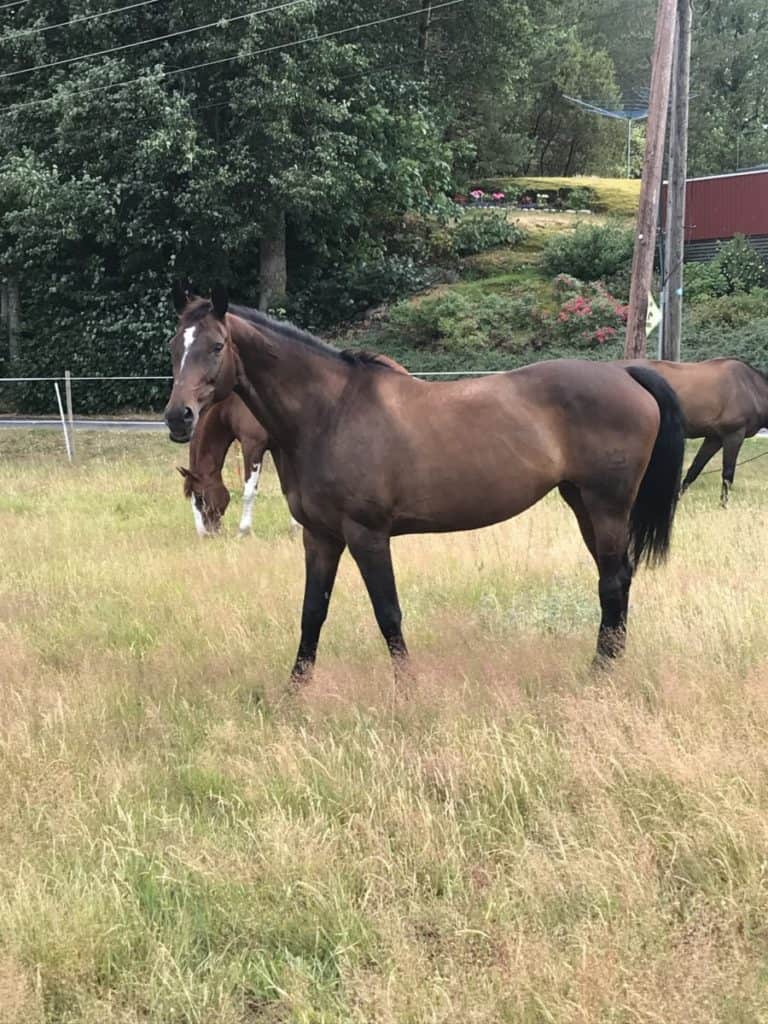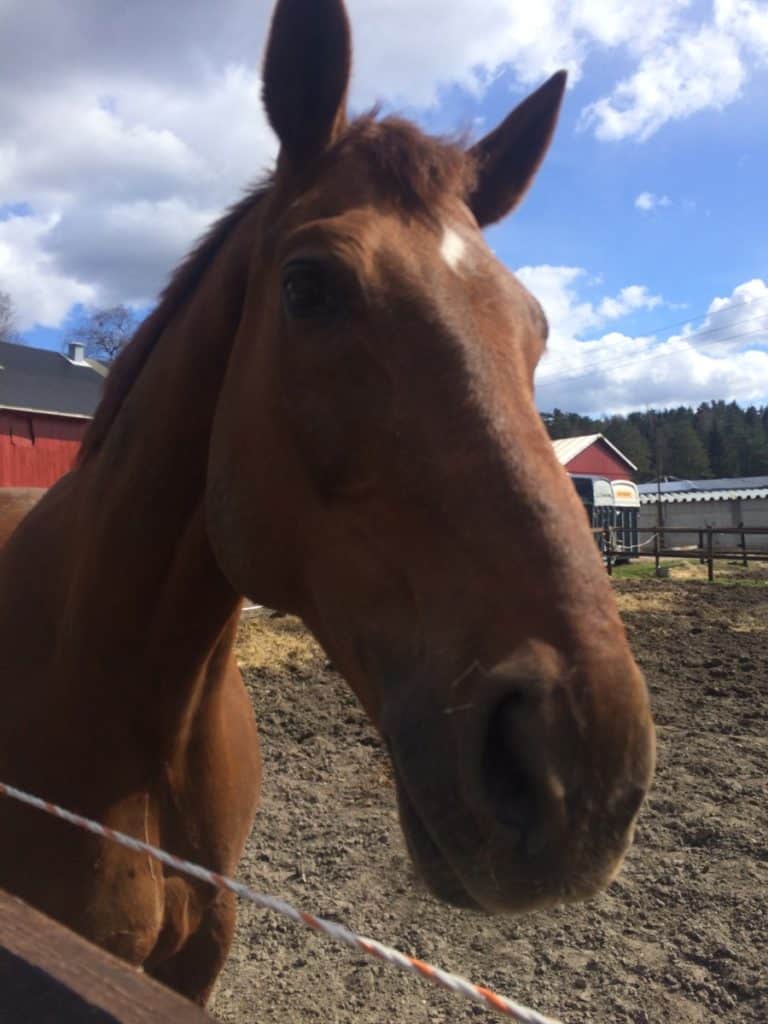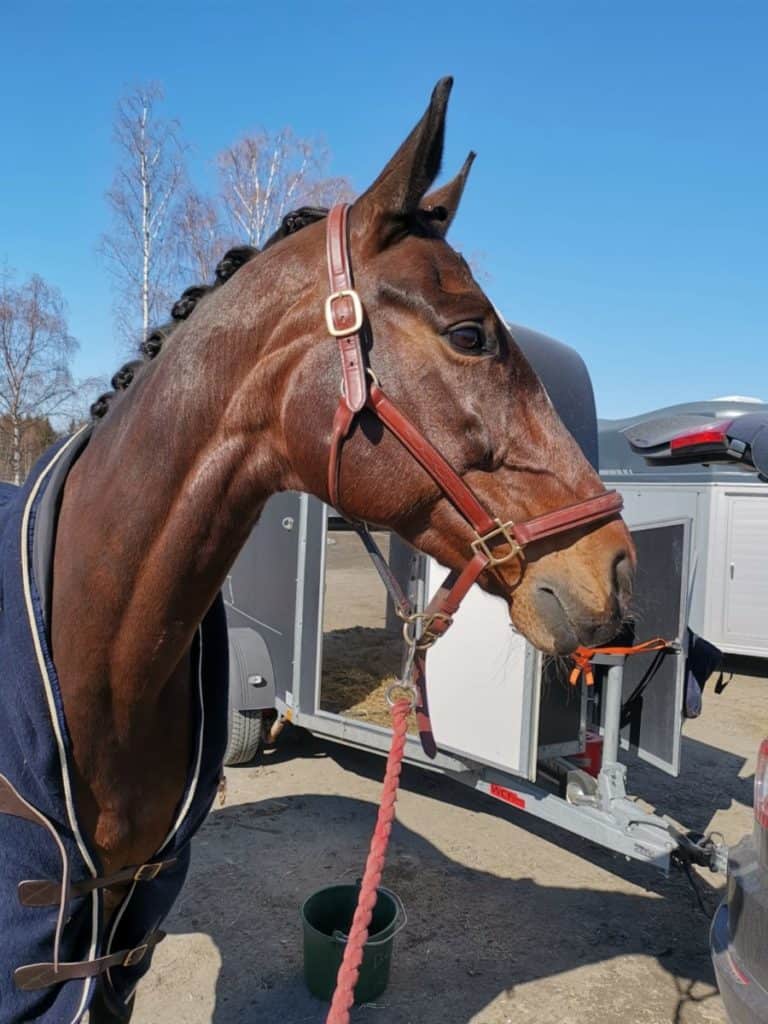
How you approach and greet a horse may have a significant impact on the following interaction between the two of you. Just like us, horses have different personalities and can react in different ways when you approach them. To remain safe and to get off on the right foot with the horse, in this article we will look at the key factors to consider before getting up close to them.
So, how do you approach a horse? Before approaching a horse, make yourself known by using your voice at a normal volume until its ears turn in your direction. Always approach a horse from an angle to avoid its blind spots, which are in front of the head as well as behind it extending to behind its tail. Before putting on a head collar if you are getting a horse from a field or paddock, let him smell your hand for a moment to establish a friendly connection first.
As you come to better understand equine behavior, approaching a horse the correct way will almost become second nature because you understand the most common ‘spook triggers’. But until you develop that understanding, the following guidelines will help you stay safe when approaching a horse and assist in establishing a good first impression with him.
How to Approach a Horse
Throughout the entire process of approaching a horse, it’s important to keep a close eye on its body language as well as being aware of your own. The horse’s body language will give us cues as to whether it feels safe and comfortable as we approach or if it makes them nervous or aggressive. Negative signs to look for are ears laid flat backward, increased swishing of the tail, stomping on the ground with the leg or moving the rear end in your direction. If you are inexperienced and the horse is exhibiting any of these signs it might be best to ask someone with more experience to go with you.
As you are paying attention to the horse’s body language it’s important that you also keep tabs on your own. It is argued (and rings true in our experience) that horses are susceptible to our moods and can sense if you are lacking confidence. Not all horses will try to take advantage of this, but some might. So, try to stay calm and approach slowly but confidently.
How we approach a horse will also vary somewhat depending on whether it’s in a stall, in the field or paddock or on a trailer, but regardless of the location there are certain ground rules that should always be followed and they essentially boil down to an approach based in the horse’s senses in the order listed below.
#1 Hearing
Before getting anywhere near a horse you want to let him know you are there and the best way to do this is by simply starting a little light conversation (ok, suppose we should call it monologue…). First, call his name to get his attention and then perhaps start telling him a little story. It could be a recount of the Netflix show you watched last night, the amazing (or amazingly bad) date you had or an actual story you make up in the moment (because you are just creative like that!). The point is, you maintain contact with the horse’s hearing and let him know where you are. Your voice will not only allow him to hear what direction you are approaching from and how close you are, but it will also let him gauge your mood and state of mind. For this reason, make sure you speak calmly but clearly and with a friendly intonation.

#2 Sight
After hearing you, you should now make sure your horse can see you. Horses are prey animals and the placement of their eyes gives them an excellent peripheral vision to spot luring dangers. However, they also have two blind spots; one directly in front of their nose stretching about 4 feet (1.2 meters) in front of them and one directly behind the tail. For this reason, always approach a horse at an angle from its shoulder where he can see you, so you don’t accidentally spook him and create a potentially dangerous situation.
#3 Touch
As you get within arm’s length and the horse is now both hearing and seeing you, it is a good idea to place a hand on his shoulder or neck to say hello and establish physical contact. Be kind and give him a few pats for allowing you into his personal space. Usually, touching the shoulder and lower neck first is a good idea as reaching for his head right away may frighten or irritate some horses. Build up to that by touching other less susceptible areas first.
#4 Smell
Once you are next to the horse and have established contact with him, offer your hand for him to smell. Horses have a highly developed sense of smell and often like to sniff out new people and horses they encounter. Although we don’t exactly know if the horse can recognize our smell, it’s only polite to give him the opportunity to take a whiff.
Below are two short and sweet videos showing how to approach a horse from the front and then from the rear.
Approaching a Horse in the Stall
Usually, approaching a horse in its stall is relatively simple. Due to the limited space, the issue of the horse hearing and seeing you is immediately resolved if the horse is facing the stall door or has his head out of the stall door opening. The exception is if the horse has turned its back to the stall door, in which case you should use your voice to attract his attention and encourage him to turn around before you enter. Accessing a stall when the horse has its back to you can be dangerous and should be avoided as much as possible.
How NOT to Approach a horse
So, now that you know how to correctly approach a horse, let’s just summarize how NOT to do it.
- Approaching the horse straight on or from the back.
- Approaching quietly and then suddenly touch or speak to the horse.
- Run towards the horse.
- Using a loud or aggressive tone of voice.
- Slapping the horse on the rear or reaching directly and abruptly for his head.
- Being overly cautious and showing a lack of confidence.
How to Put on a Headcollar

When approaching a horse outside it will usually be for the purpose of bringing him back to the stables before a ride or for feeding. In order to lead him where you want to go, you will have to put on a headcollar. This is a fairly simple procedure and we have outlined the steps below.
- Prepare the head collar by opening the chin clasp and attaching the lead rope.
- Approach the horse in the manner outlined above.
- Once you get next to the horse, place the lead rope loosely around the horse’s neck and hold on to it with one hand.
- Slide the noseband around the muzzle and up onto the nose ridge.
- Pull the headband up behind the horse’s ears.
- Attach the chin clasp.
- Pull the forelock through to the front and make sure the mane is at the back of the neck strap.
- Now you can lead the horse back to the stables. Walk on its left side with your right hand on the lead rope close to the head collar and the left hand towards the end of the lead rope.
Here is a great video by This Esme illustrating how to put the head collar.
Now that you know how to correctly approach horses we hope you can do so with confidence. Good luck!


